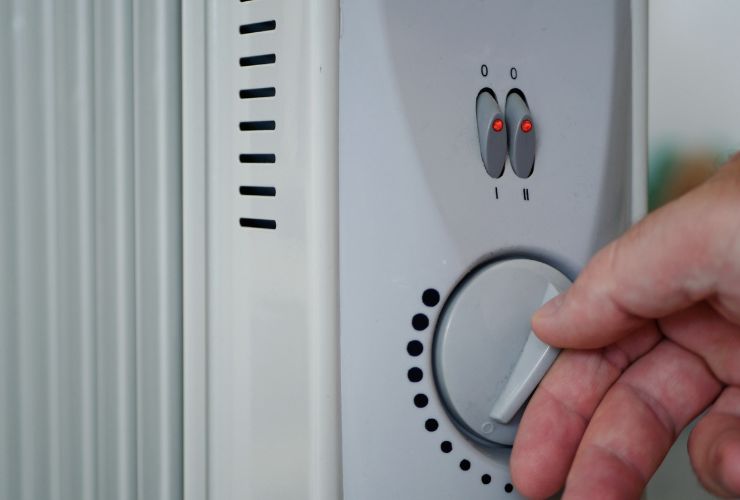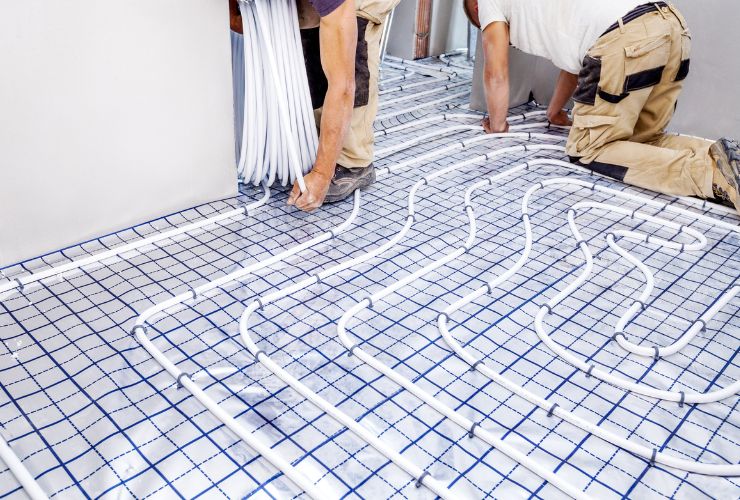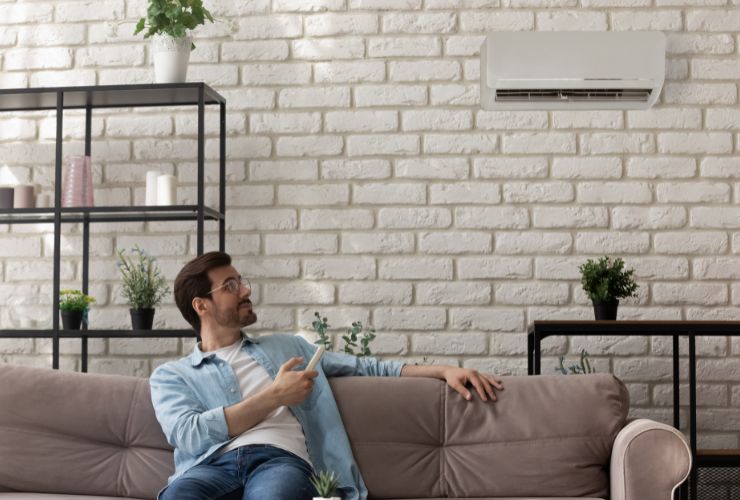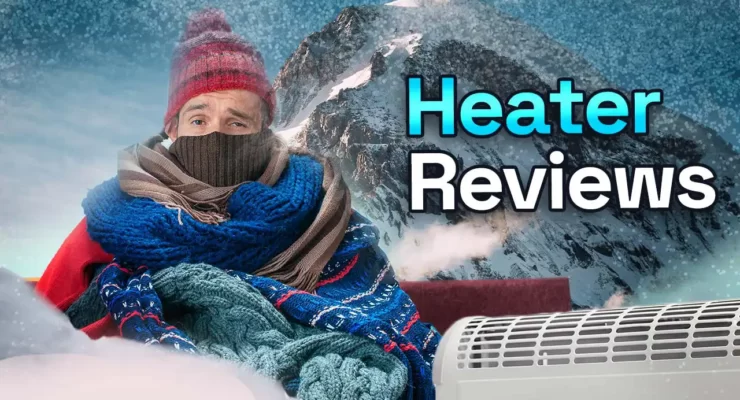Fast read
Think about your needs while selecting a heater. While radiant heaters warm objects directly, convection heaters circulate warm air. Although efficient, gas heaters need ventilation. Heaters that use oil are dependable but use more electricity.
Although comfortable, underfloor heating takes preparation. Forced-air heaters swiftly circulate warm air but have the potential to dry out the air. Effective heating and cooling are both provided by reverse cycle air conditioner.
Although they are inexpensive, wood heaters require maintenance. Consult local vendors about choices for sustainable energy.
What’s the best heaters in Australia for your home
Heat is necessary to keep us warm and comfortable, particularly during the chilly winter. Numerous varieties of heaters exist, each with a unique set of benefits and drawbacks. For you to select the best heater in Australia that meets your needs and tastes, we will examine the many types of heaters and their distinctive features in this FAQ.
What are the different types of heaters in Australia?
Convection heaters
A heater called a convection heater, employs air movement to disperse warm air around a space. They function by heating the air close to the heater and then distributing the heated air across the space using a fan or natural convection.
Convection heaters are frequently effective and quiet, although they might take longer to heat a room than other heaters. Oil-filled radiators, ceramic heaters, and panel heaters are standard convection heaters. Regarding efficiency, the cheaper models are terrible and more pricy models are better, but not ideal.
Radiant heaters
Instead of warming the air, radiant heaters employ infrared radiation to warm things and people directly in space. They function by generating infrared rays, which are then absorbed by nearby objects. Radiant heaters are not as efficient as other types. However, they quickly warm a room by heating people and objects, rather than the air.
Infrared heaters, infrared panels, and infrared bulbs are a few popular radiant warmer varieties. Radiant heaters have the benefit of frequently being affordable, with costs ranging from $15 to less than $200. Oil heaters without a timer can be costly to run compared to other heaters, leading to higher operating costs over time.
Gas heaters
Gas heaters are a particular heater that provides heat by burning natural gas or propane.
They can still generate heat even during a power loss and are often more efficient than electric heaters. They may be more expensive to run and require good ventilation to safely remove harmful gases outside.
Gas heaters release emissions when burning gas. This can make them less environmentally friendly. Heaters that use renewable energy electricity are a more eco-friendly option.
Oil-filled heaters
Electricity is used to heat the oil in oil-filled heaters, which use the oil as a heat source. They provide steady heat for a long time, are efficient, and operate quietly.
Oil-filled heaters are less eco-friendly than other heaters, such as air-conditioning heat pumps, since they use much electricity to produce heat, e.g. 2 kWh or more on full throttle.
Baseboard heaters and radiator heaters are a few typical models of oil-filled heaters. Oil-filled heaters range in price from $70 to $350, with the more expensive types coming with timers that enable them to be set to switch on and off automatically. If this heater is used wisely with the timer and thermostat, it can offer an economical solution. If, on the other hand, one runs this style of heater all day – then the energy bill will be astronomical.
Underfloor heating
This technology is becoming one of the best heating technologies in Australia to provide central heating in new homes and commercial buildings. Underfloor heating is installed beneath the floor to provide consistent and even heat, as the name implies.
It comes in two technical solutions, which are electric and hydronic. Hydronic uses pipes under the floor which circulate with hot water. This system requires a pump and a source to generate the hot water.
Heat pumps are nowadays the most economical solution to generate this hot water, especially if coupled with solar electricity generation. The water is heated to 40-60 degrees Celsius, depending on the flooring. This technology has low heat loss, making it extremely efficient.
The electric underfloor heating solution uses wires or mats installed beneath the flooring, which is cheaper to install than a hydronic system. It is also more easily installed as a retrofit underfloor heating system. Again solar energy, potentially coupled with batteries, can be the source of this heating electricity.
Hydronic underfloor heating systems are usually the more energy-efficient solution. They may be a better choice for larger spaces or for those looking for a long-term heating solution, especially when building a new home.
Disadvantages of underfloor heating
Underfloor heating is not cheap and is a good solution for people looking for solid long-term solutions, not just a quick heater to survive a cold day.
- An electric heater is easy to use, but underfloor heating needs careful planning and precise installation.
- Some floors and the access issue might reduce the ability to install underfloor heating in some circumstances.
- Underfloor heating provides slow and steady heat to the room, so if you prefer rapid heating, this solution may not be the most effective.
- Repairs, if needed, require specialists who will not always be cheap.

Electric radiator heaters
Among the several types of best heaters in Australia are electric radiator heaters, which produce heat quickly using electricity. They are practical and straightforward to use. But their running cost will be high, mainly if you consume a lot of electricity.
Forced-air heaters
A forced-air heater uses electricity and a fan to blow warm air around a room. They can efficiently distribute heat uniformly around a room and are frequently quick to heat an area. However, they can make a room’s air dry, therefore it’s crucial to use a humidifier along with them.
Reverse cycle air conditioning
Air conditioning is one of the best heaters in Australia because the equipment is a cooling source in the hot summer months. This technology absorbs the heat from the outdoor air (even if it seems cold to us) and transfers it indoors.
In summer, when standing at the outdoor air-conditioning unit, you can feel hot air leaving the unit. In winter, this reverses, and cold air is dispersed.
By efficiently providing heating and cooling, this option is one of the most popular.

Wood heaters
Our forefathers used wood heaters, which are still prevalent in regional Australia, where firewood can be abandoned. Wood stoves or fireplaces burn wood to create heat that warms the room through convection or radiant heat.
Wood heaters are generally cheap to run if one can source the wood cheaply, but they require a steady supply of firewood. Also, one must clean the ash out regularly to keep them working well.
Overall, choosing the best heater in Australia for your needs will depend on cost, efficiency, and the size of the space you need to heat.



